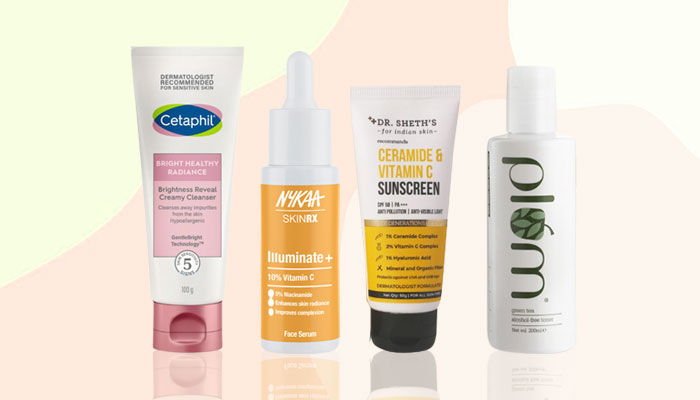
Managing oily skin can feel like an endless cycle of cleansing, blotting, and worrying about shine before lunchtime. But oily skin isn’t a problem; it’s simply a skin type that needs balance. The key to maintaining that balance lies in choosing the right products and understanding how your skin behaves.

A smart, consistent skincare routine focused on cleansing, hydration, an effective oil-control toner, and a gel-based sunscreen for oily skin can transform the way your skin looks and feels throughout the day. Let’s explore how to integrate these products effectively into your daily routine to achieve a clear, shine-free complexion.
What constitutes as Oily Skin?
Oily skin is the result of overactive sebaceous glands producing more sebum than necessary. Sebum itself isn’t bad; it is an important element to our skin, which protects our skin, keeps it hydrated, and forms a natural barrier. However, excess sebum can mix with dead skin cells and debris, clogging pores and leading to blackheads, whiteheads, and breakouts. The challenge is to regulate oil production without stripping away the skin’s essential moisture.
Essential Steps for Oily Skin Care
Step 1: Cleansing
Every routine begins with a cleanser, and oily skin benefits most from lightweight gel or foam cleansers that remove dirt, makeup, and excess oil without leaving the skin feeling tight. Look for ingredients like salicylic acid, zinc PCA, or tea tree extract, which help unclog pores and reduce surface buildup. Cleanse your face twice daily, in the morning and evening, to prevent pore congestion. After cleansing, gently pat your skin dry with a soft towel rather than rubbing it harshly.
Step 2: Toning
The toner step is often skipped, but for oily skin, it can be a game-changer. A well-formulated oil control toner helps remove any residue left after cleansing, minimizes the appearance of pores, and preps the skin for the next steps in your routine. It also provides ingredients that directly address sebum regulation.
Ensure your toner is alcohol-free, since alcohol can cause dryness and lead to rebound oiliness. The right toner refreshes your skin, balances pH, and leaves it ready to absorb the goodness of your moisturizer or sunscreen that follows.
Step 3: Moisturizing
It might seem counterintuitive to apply moisturizer on oily skin, but hydration is crucial. Dehydrated skin often compensates by producing even more oil. Choose a lightweight, oil-free or water-gel moisturizer that replenishes moisture while maintaining a matte finish. Ingredients like hyaluronic acid, glycerin, and aloe vera hydrate without clogging pores.
If you prefer layering products, use a hydrating serum before your moisturizer to lock in moisture. Remember, oily skin can still be dehydrated, and skipping this step will only make the problem worse in the long run.
Step 4: Sunscreen
Irrespective of skin type, sunscreen remains an indispensable element of every comprehensive skincare routine. However, for individuals with oily skin, pinpointing the ideal sunscreen can present a unique challenge. Thick, heavy cream-based formulas can leave the skin feeling uncomfortably greasy and might exacerbate the occurrence of breakouts. This is precisely where gel-based sunscreen for oily skin shines.
Gel-based sunscreen for oily skin boasts a lightweight, non-comedogenic (formulated to avoid pore-clogging) texture that is swiftly absorbed into the skin, leaving behind a desirable matte finish. Prioritize sunscreens that offer an SPF of 30 or higher, along with broad-spectrum protection, signifying protection against both UVA and UVB rays, thereby safeguarding your skin from the damaging effects of the sun.
Evening Care for Oily Skin
At night, repeat your cleansing and toning steps to remove sunscreen, pollution, and oil buildup from the day. Follow with a light serum or treatment that targets your specific concerns, such as refining pores or getting an even texture. Ingredients like retinol, salicylic acid, or niacinamide work effectively for oily and acne-prone skin when used correctly.
Seal your routine with a soothing, non-greasy moisturizer or a sleeping gel to restore hydration overnight. This step supports the skin’s natural repair process, keeping oil production regulated and texture smooth.
The takeaway
The best skincare routine for oily skin isn’t about stripping away oil; it’s about managing it intelligently. By using a gentle cleanser, an effective oil-control toner, a hydrating lightweight moisturizer, and finishing with a gel-based sunscreen for oily skin, you can achieve a balanced, healthy complexion that stays matte and refreshed all day.















